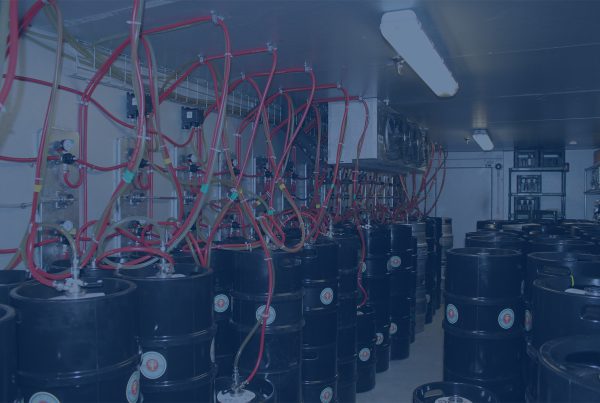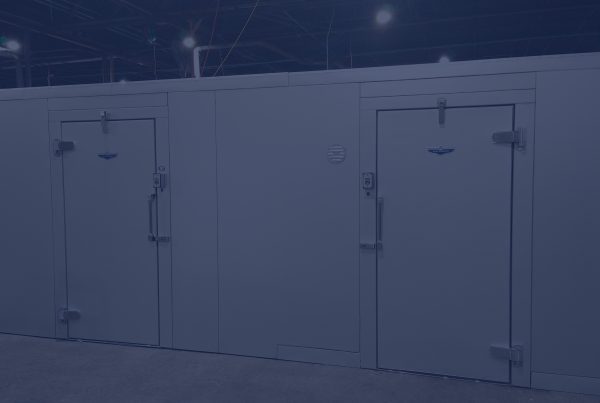Improper fixes to hard-to-open doors can cause ice and frost build-up, water dripping on
floors, freezing around door seals and unusual icing patterns in and around the refrigeration equipment.
Nature’s Basics
The physical nature of air causes a cooler or freezer to have a negative pressure compared to the outside air. This is due to the contraction of the air as the temperature drops. The pressure of the air in a sealed box will decrease by 0.3 psi for every drop in temperature of 10 degrees Fahrenheit.
Note: This negative pressure is not caused by the refrigeration equipment removing air. The evaporator fans just cool the air and push it around the box. They don’t have any exhaust venting or “makeup air” being brought in from the outside (like they do in air conditioning systems).Check it Yourself
The most dramatic pressure change happens when the door is closed. Warm air that entered a cold freezer will be cooled within seconds by contact with the ceiling, walls and product. If the average air temperature quickly drops from 40 to 30 degrees, the pressure drops by 0.3 psi. That’s 43 pounds per square foot, over 800 pounds of force on a normal size door. The door will be impossible to re-open until the pressure is equalized.
Note: The bigger the size of the door and the more airtight the box, the more dramatic it will be.How does the box manufacturer deal with this pressure difference?
The box manufacturers use a vent system to “bleed” the pressure difference. Most use a heated vent so frost will not build up on the vent. That doesn’t mean no moisture gets in; it just means it won’t collect at the vent and block it. Defrost cycles need to be adjusted accordingly (remember that too many defrosts can cause steaming – see the presentation on steaming on the Russell or ColdZone website). Air vents are selected based on the cubic foot air volume of the box and the pull-down rate. Larger doors need a lower opening pressure. Below is a typical vendor example of sizing.
Note: Box= FT Length x FT width x FT height = CUFT or FT3.

This article courtesy of HTPG. For more info and Tech Tips visit: russell.htpgusa.com or coldzone.htpgusa.com



